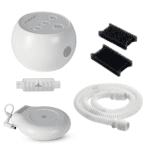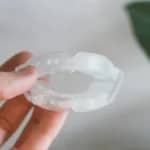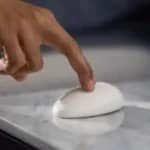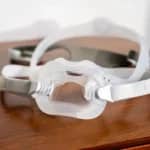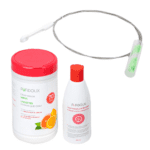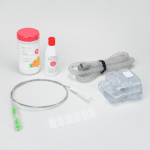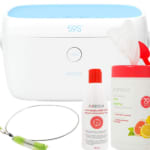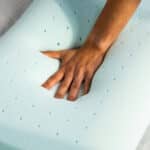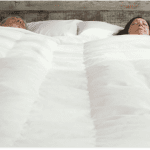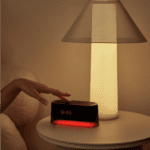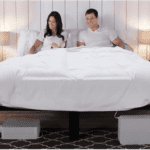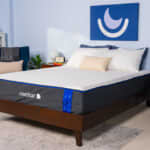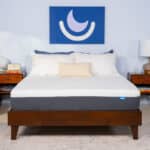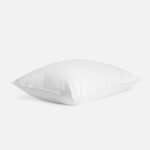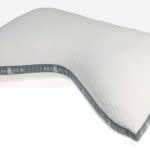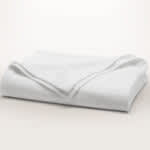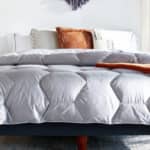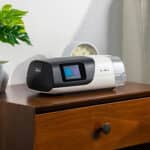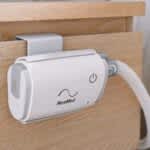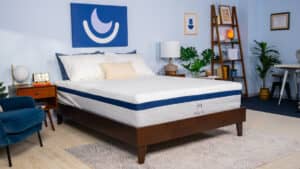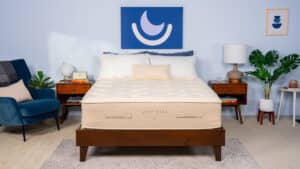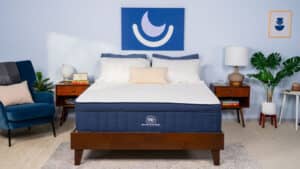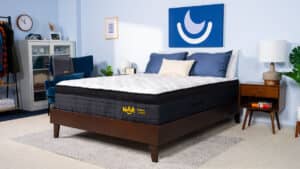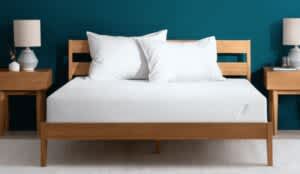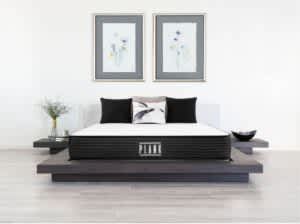Known for their contouring, motion isolation, and pressure point relief, memory foam models are a popular mattress option. However, because of the density of the material and the way it molds to the body, poor temperature regulation is a common complaint.
Popularized in the early 2010s, gel memory foam mattresses retain the benefits of traditional memory foam while introducing gel intended for cooling. We’ll explore what gel memory foam is, how it works, and whether it really sleeps cool. We’ll also discuss who gel memory foam mattresses are best for so that you can decide if one is right for you. Finally, we will look at other factors that can help you stay cool while you sleep, regardless of the type of mattress you choose.
What Is Gel Memory Foam?
Gel memory foam combines traditional memory foam with gel intended to draw away heat that could otherwise become trapped against the sleeper’s body.
Traditional memory foam is a type of polyurethane foam with additional chemicals to increase its viscosity and elasticity. The resulting material molds to the shape of your body by responding to your heat and weight. This can help relieve pressure and promote spinal alignment. On the other hand, the close contouring can also limit air circulation and make you hotter. Gel memory foam mattresses aim to address this drawback.
Mattresses can incorporate gel by swirling it into the memory foam or inserting gel microbeads. Alternatively, a mattress may use a thin gel pad in conjunction with the memory foam layer.
How Does It Work?
Gel memory foam is intended to reduce the buildup of body heat, though the methods vary based on the type of gel. Thermal gel is engineered to feel cool to the touch for instant relief. Phase change material is designed to draw warmth into the gel, shifting from a solid to a liquid state and transferring heat away from the sleeper.
Is It Cooler Than Regular Memory Foam?
Some sleepers feel that gel memory foam sleeps cooler than traditional memory foam, but performance varies between models and brands.
In general, the close contouring that makes memory foam comfortable for many individuals can also contribute to heat retention. Gel memory foam mattresses aim to cool the sleep surface by absorbing and redistributing heat. However, there is a limit to the gel’s heat absorption capability, so any cooling effect may diminish as the night progresses.
Let Us Help You Find the Perfect Bed
Answer a few questions to find the right mattress for your unique needs
Should You Sleep on a Gel Memory Foam Mattress?
Many gel memory foam models are popular with sleepers. However, you’ll need to consider your preferences and the mattress’ specific features to determine if one is right for you. We’ll highlight the potential pros and cons of a gel memory foam model to help you decide.
Who Is Gel Memory Foam Best For?
Gel memory foam is a good option for those that tend to overheat but appreciate the cradling of traditional memory foam. The gel is designed to regulate temperatures while the memory foam hugs the sleeper’s body. This may appeal to people that sleep hot but need a combination of pressure relief and support, such as side sleepers and individuals with neck or back pain. Similarly, those that sleep with a partner may appreciate gel memory foam’s motion isolation and potential temperature control.
That said, you can expect to pay more for a gel memory foam mattress because they use more materials.
Gel Memory Foam
Pros
- Contours like traditional memory foam
- May reduce body heat buildup
Cons
- More expensive than traditional memory foam
- Cooling effect may not be noticeable or lasting
Other Ways to Keep Cool While Sleeping
The kind of mattress you choose is only one factor to consider for regulating body temperature. Other methods can also help you stay cool at night.
Try Different Bedding
Some bedding can help you keep cool. Cotton sheets in a percale weave and linen sheets let air circulate so that heat can dissipate. Rayon sheets derived from bamboo also tend to be breathable and cool to the touch. If you like extra layers but often run hot, you may also benefit from a thinner blanket or a comforter specially designed for cooling.
Change Your PJs
The kind of pajamas you wear can affect your overnight temperature. In general, natural, lightweight fabrics allow for more airflow. Cotton and linen are popular options. Wearing shorts instead of pants and forgoing unnecessary layers, such as socks, may also help.
Lower the Temperature
Consider turning down the thermostat at night or adding a fan to your bedroom. If safety allows, you might also open a window during cooler months.


